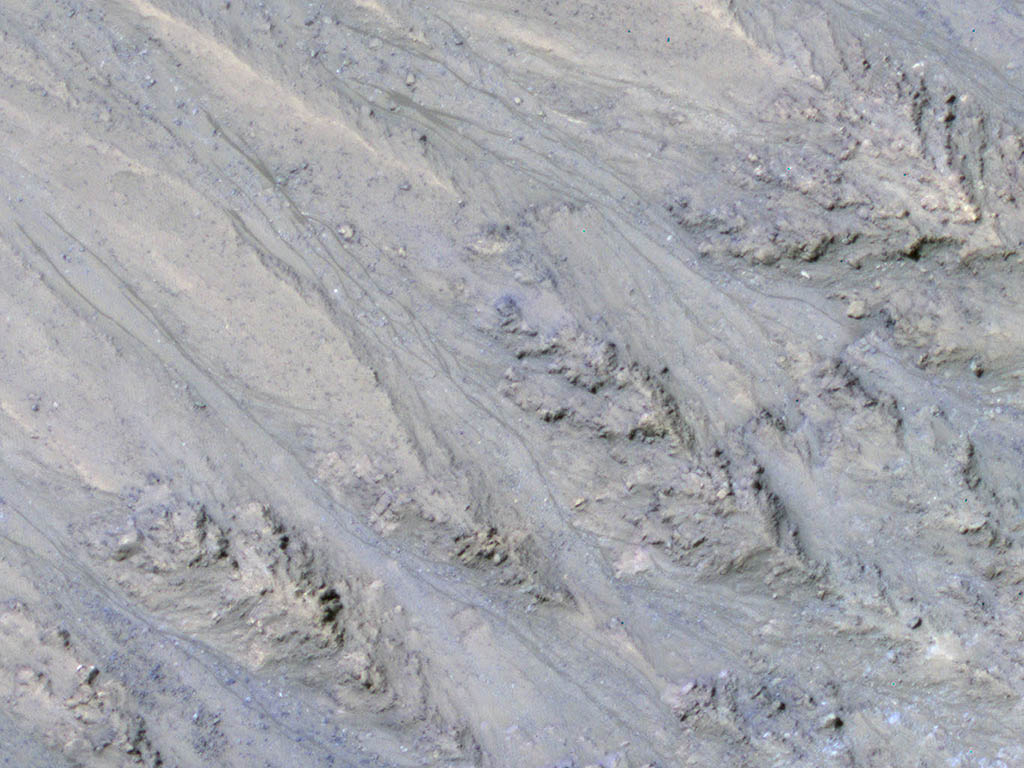This inner slope of a Martian crater has several of the seasonal dark streaks called “recurrent slope lineae,” or RSL, that a November 2017 report interprets as granular flows, rather than darkening due to flowing water. The image is from the HiRISE camera on NASA’s Mars Reconnaissance Orbiter. (NASA/JPL-Caltech/UA/USGS)
Home This inner slope of a Martian crater has several of the seasonal dark streaks called “recurrent slope lineae,” or RSL, that a November 2017 report interprets as granular flows, rather than darkening due to flowing water. The image is from the HiRISE camera on NASA’s Mars Reconnaissance Orbiter. (NASA/JPL-Caltech/UA/USGS) This inner slope of a Martian crater has several of the seasonal dark streaks called "recurrent slope lineae," or RSL, that a November 2017 report interprets as granular flows, rather than darkening due to flowing water. The image is from the HiRISE camera on NASA's Mars Reconnaissance Orbiter. (NASA/JPL-Caltech/UA/USGS)
This inner slope of a Martian crater has several of the seasonal dark streaks called “recurrent slope lineae,” or RSL, that a November 2017 report interprets as granular flows, rather than darkening due to flowing water. The image is from the HiRISE camera on NASA’s Mars Reconnaissance Orbiter. (NASA/JPL-Caltech/UA/USGS)


